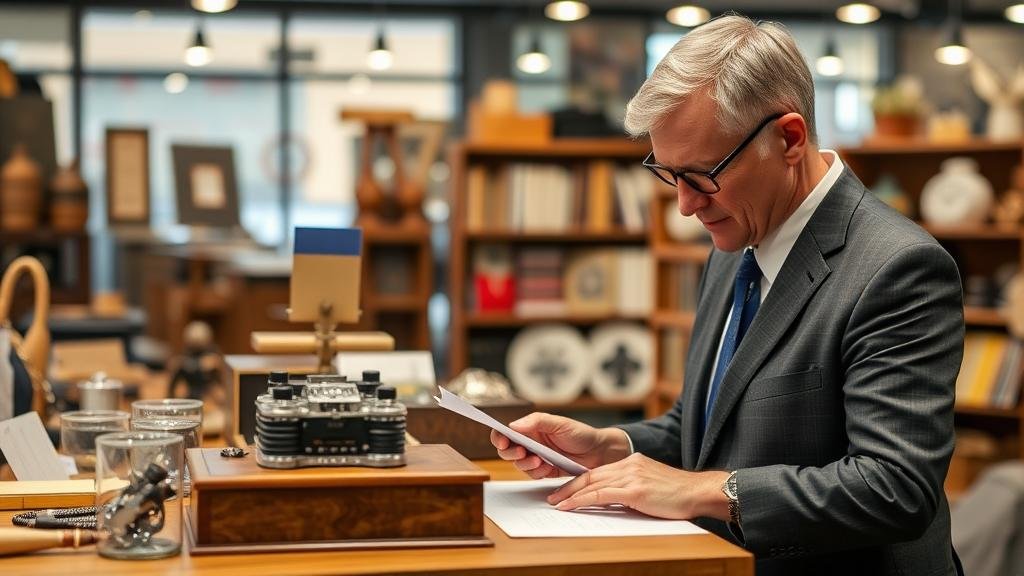Tips for Negotiating With Buyers for Rare or High-Value Finds
Tips for Negotiating With Buyers for Rare or High-Value Finds
Negotiating with buyers for rare or high-value items requires a unique set of skills and strategies. The stakes are often higher than in standard negotiations, and understanding the nuances of this process can lead to more successful outcomes. This article offers a comprehensive guide to effectively negotiating with buyers for rare or valuable finds, covering preparation, strategy, and finalizing the deal.
Understanding the Value of Your Item
Before entering into negotiations, it’s essential to have a solid understanding of the value of your item. This not only involves understanding its monetary value but also its historical, sentimental, or collectible significance.
- Market Research: Use platforms like eBay, Heritage Auctions, or specialized auction houses to compare similar items and gauge the current market value.
- Appraisals: Seek out professional appraisals from certified experts in the field to obtain an accurate valuation.
- Rarity: Assess the uniqueness and desirability of your find, as these factors can significantly enhance its value.
For example, a rare comic book may have a baseline market price of $1,000, but if it is a first edition in mint condition, its value could potentially reach $10,000 or more at auction. So, understanding how to evaluate and present your items worth is critical.
Effective Communication Skills
Communication plays a vital role in negotiations. Establishing a rapport with potential buyers can be just as important as the item itself.
- Active Listening: Pay close attention to the buyers needs and preferences. This helps you tailor your negotiation strategy accordingly.
- Clear and Concise Messaging: Articulate the key features and benefits of the item in a straightforward manner, avoiding jargon unless necessary.
- Non-Verbal Cues: Be aware of body language, both yours and the buyers. Confident posture and eye contact can convey trust.
For example, if a buyer expresses interest in the history behind an antique piece, sharing a compelling story can enhance its perceived value and build emotional investment, leading to more favorable terms.
Strategic Pricing and Initial Offer
Setting the right price is crucial in initiating negotiations. Here are some strategies for pricing your item effectively:
- Price Anchoring: Start with a higher initial price than your desired outcome. This creates an anchor point that can influence the buyer’s perception of value.
- Flexible Pricing: Be prepared to move slightly from your initial price based on the buyers responses and offers, while ensuring you maintain your bottom line.
- Highlight Comparables: Use recent sales of similar items to justify your pricing and validate your offer.
As an example, if you want to sell a vintage watch for $5,000, you may initially list it for $6,000. This allows for negotiation while ensuring you still achieve your desired price.
Establishing Trust and Transparency
Building trust is essential in high-value negotiations, as buyers are more likely to proceed if they feel secure in their transaction.
- Provide Documentation: Offering certificates of authenticity, provenance, or appraisals can bolster credibility.
- Be Honest About Condition: Disclose any flaws or imperfections in the item. Transparency can prevent potential disputes post-sale.
- Be Available for Questions: Make yourself accessible to address any concerns the buyer may have, reinforcing your commitment to a fair transaction.
A good illustration of this is a seller of rare coins, who provides detailed photographs, grading information, and historical context, thereby instilling confidence in the potential buyer.
Negotiation Tactics and Strategies
Once the negotiation process begins, certain tactics can facilitate better outcomes:
- Know Your BATNA: Determine your Best Alternative To a Negotiated Agreement (BATNA). This gives you leverage if negotiations stall.
- Silence is Golden: Use pauses strategically. After making an offer or presenting a fact, allow time for the buyer to process and respond.
- Be Willing to Walk Away: If negotiations are not meeting your expectations, do not hesitate to walk away to maintain the integrity of your position.
For example, if a potential buyer is unwilling to meet your minimum price, remaining steadfast can either lead them to reconsider their offer or free you to explore other opportunities.
Finalizing the Agreement
Once you reach a mutual agreement, it’s important to ensure all aspects are clearly documented to avoid future complications.
- Written Agreement: Create a contract outlining the terms, pricing, and any additional agreements (like warranties or return policies).
- Secure Payment Method: Opt for trusted payment options to protect both parties (e.g., PayPal, escrow services).
- Follow Up: After the sale, send a thank-you note and confirm details, reinforcing a positive relationship that may lead to future transactions.
A real-world example of this is seen in luxury art auctions, where all transactions are documented meticulously, ensuring both buyer and seller have a clear understanding of terms before finalization.
Conclusion
Negotiating with buyers for rare or high-value items requires both preparation and emotional intelligence. By understanding your items value, honing your communication skills, employing strategic pricing, and fostering trust, you can improve your chances of a successful negotiation. Remember to remain flexible but firm in your position, and always prioritize transparent and honest dealings. These fundamental practices will not only help in securing better deals but also in establishing lasting relationships with buyers who may return for future purchases.


